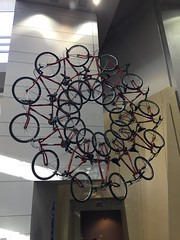 On the call were Diane Huckabay, Maurice Coleman, Tom Haymes, and Paul Signorelli. Our topic was adult education theory and we began our focus on Malcolm Knowles. Is andragogy truly different from pedagogy? Is adult education different than what we do (or should do) with K-16 students? We recognized that there were different traditions in this (e.g., European versus U.S.). During our talk, we mentioned other people who have written and theorized on this. This was a fast moving – and focused – conversation.
On the call were Diane Huckabay, Maurice Coleman, Tom Haymes, and Paul Signorelli. Our topic was adult education theory and we began our focus on Malcolm Knowles. Is andragogy truly different from pedagogy? Is adult education different than what we do (or should do) with K-16 students? We recognized that there were different traditions in this (e.g., European versus U.S.). During our talk, we mentioned other people who have written and theorized on this. This was a fast moving – and focused – conversation.
Since Jill edits this blog, she will mention this quote from “Various ways of understanding the concept of andragogy”:
There was a need to shape a form of education that could contribute to justice and peace and that would show that the societies in question had learnt lessons from the racial hatred and intolerance that accompanied the war. This led to rapid growth in the field of adult education after World War II.
You can listen to the episode on TalkShoe or wherever you get your podcasts. Our next show will be on May 6.
Resources
- Svein Loeng. (2018) Various ways of understanding the concept of andragogy,
Cogent Education, 5:1, 1496643, DOI: 10.1080/2331186X.2018.1496643 - Malcolm Knowles. (2020) The Adult Learner 9th Edition.
- Computer Lib/Dream Machines, Revised Edition. This is out of print. You can find copies of this online.
- . (2020) All for Andragogy. BizEd.
- Alfie Kohn. (2011) The Case Against Grades.
- Richard Arum. (2010) Academically Adrift: Limited Learning on College Campuses.
- In Search of the Edge [1990 Mocumentary Film]
- Tom Haymes. Learn at Your Own Risk.
- Doonesbury. (2016) Panthering the Wire with Alzheimer’s.
- [Addendum 4/23/2021] Improving Learning in Higher Education. April 22, 2021. 58-minute video.
- Addendum, 4/23/2021] Lost in the Maze: Motivating the Student Voice
